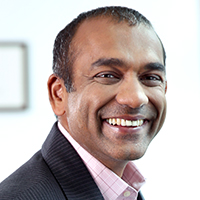Consumer spending is the largest component of India’s Gross Domestic Product (GDP), making up almost 60 per cent of more than US$2.8 million. Traditionally, policy makers use monetary policies to shape consumption. For example, if people are not spending enough, banks can lower interest rates so that people will be more motivated to borrow and spend more, thus boosting the economy. How people spend can be motivated by their views and behaviours towards external events as well.
Take data leaks for example. Would you use digital payments less frequently if a data leak just happened? A study I did on a data breach involving an online food delivery platform in India showed that the answer is yes, but just for a short while.
Users were more concerned about making digital payments immediately after learning from the media that their data was leaked. Digital payments declined by 4.6 per cent to 7.5 per cent relative to cash payments. There was a decline in overall usage of the app, as users made fewer digital payments. But cash payments increased, showing that users had not forsaken the app — they were just more careful with their data.
The gap between digital and cash payments closed three months later. Our analysis of other data breaches, such as those involving a bank and an online grocery store, also found little change in user behaviour. Our findings suggest that people value convenience more than the risk of a data leak.
Other types of events, such as terrorist attacks, can also change the way people spend. One study analysed people’s usage of credit card and debit card in the three weeks following terrorist attacks.
The difference between credit and debit cards is simple. Usage of a debit card deducts money immediately from one’s savings account. Usage of a credit card allows one to use borrowed money and make payments later, failure of which will lead to required payments of interest.
The study, which used data from a large bank in India, looked at how bank consumers in nine major Indian cities spent during 2014 to 2017. We found that people who lived in the city where the attack occurred increased their daily usage of credit card slightly more than those who lived in other cities. In fact, those who lived closer to the attack location showed a greater shift in using credit card over debit card.
This change is more prominent among the group of consumers who have tight or unstable cashflows. Meanwhile, those without credit cards do not significantly change their spending.
Interestingly, the shift to credit card over debit card is more prevalent in buying goods that are not so essential. In addition, people invest more after the terrorist attacks, notably in investments with lower risk, such as those that are related to savings. Still, these behavioural changes, while immediate, are not persistent.
A more persistent effect in consumer spending can be found following a natural disaster. Natural disasters have become more frequent and intense globally. When they wreck damage to roads and stores, the supply of goods is affected, hence prices go up and people may buy less of it. Natural disasters can also decrease economic activities, as business operations slow down and lead to a decline in household income as well.
A case in point is the Chennai Flood in 2015, one of the most severe floods in India’s history. More than 500 died, many were made homeless, and the damages cost over US$14 billion. Studying individuals’ financial data and supermarket sales data before and after the Chennai Flood, we found that consumption dropped by 11 per cent during the disaster, 65 per cent of which was recovered after the disaster. The consumption per capita dropped by US$312 per year on average, which is about 5 per cent of the GDP.
Changes in prices of items did not change how people spend during the natural disaster. It was the change in people’s income that affected their spending. In balancing their current needs and future saving needs, these consumers turned to more credit card usage and bank loans. The group who balanced these needs also had more wealth with higher liquidity.
While consumption picked up after the disaster, it remained at 4 per cent below the pre-flood level. This suggests that floods have a longer impact on consumer spending.
People behave differently in response to external events. Some changed their mode of payment but only for a short period. Some took lower risks following a negative event. Some spent less when an external event reduced their incomes. Monetary policy-makers would need to bear in mind that in shaping the economy’s consumption patterns, people’s behaviour in certain events can come into play too.




